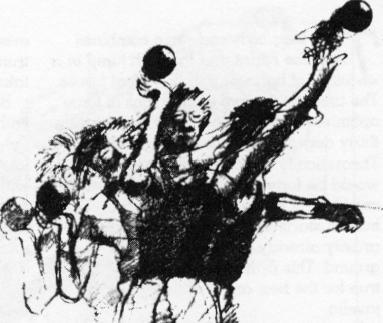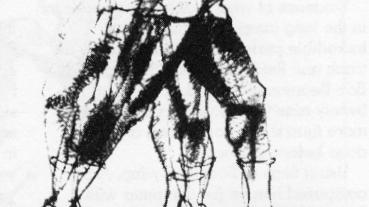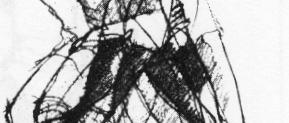| Previous | Index |
Olympics Preview:
THE PERFECT SHOT PUT Current world record: 71 h. 8', in. Projected outer limit 100 ft
hile wandering among the athletes at a meet in Spain in 1973,
Ariel paused to watch some East Germans put the shot. He
noticed that contrary to accepted practice, the Germans heaved the sixteen-pound weight with the back leg off the ground and the front foot coming all the way to the bucket or toe guard that rims the launch circle. Innocently, Ariel pointed out the flaws to East German coaches. They
promised to initiate measures to reform their deviants. However, Ariel saw that for all the talk, the East Germans kept right on lifting that back leg, making sharp contact with the toe guard and throwing the shot goodly distances. Less blessed with sophisticated systems for biomechanical study, the East Germans had nevertheless discovered a precious asset for putting the shot: maximum deceleration.
The shot put involves a linkage of forces generated by legs, thighs, trunk, shoulders and arms into a united push against the ball. Just before the weight leaves the hand, the athlete suddenly decelerates. He halts his movement forward and applies the resultant force to the shot. When the rear leg is
on the ground at the moment of deceleration, some of the force dissipates into the earth. But when the back leg lifts off, the forces in it must travel through the body. Force that might have gone into the
ground goes to the shot.
When the front foot smacks against the toe guard, it causes a greater amount of deceleration than if the athlete merely slowed himself by means of the friction of his shoe on the earth. Added deceleration means more force. One caution on the East German style: the shot-putter needs strong knees to withstand the shock of the deceleration.
Equally significant, Ariel's study shows that maximum force upon the shot comes before full extension of the arm, in the tradition of follow-through. It's analogous to whip action. Swing a shaft of wood or a bat
or golf club. Stop your swing suddenly. The tip of the shaft will whip forward and at a greater rate of acceleration than if you had simply followed through with a full swing. The deceleration
applied by arresting your arms is transmitted -along the length of the shaft and manifested at the tip. That explains why slightly built baseball players, using
thin-handled, whippy bats, hit home runs as well as their heavier colleagues ' t+
equipped with massive bludgeons. Follow-through comes after maximum force has been brought to bear and it adds nothing. It may program the athlete for the proper swing or throw but it detracts if the moment of contact or release occurs after application of optimum force.
Although Terry Albritton holds the amateur record of seventy-one feet eight
and a half inches, Brian Oldfield, a pro and ineligible for the Olympics, has tossed seventy-five feet. Oldfield's superiority rests on two features. Bigger and heavier, he is potentially stronger than Albritton. His second benefit lies in style. Albritton relies on the Parry O'Brien technique, straight-line steps across the launch circle. Oldfield uses a turning tactic, akin to the discus style, and it adds the potential of centrifugal force.
When Ariel ran Albritton through his computer with a turning style, he produced a
seventy-six-foot throw. But when Oldfield was programmed into the machine with ideal conditions, back leg up, front foot to the bucket, the linkages in synch, and using muscle force that he has previously shown, Oldfield "threw" eighty-eight feet. Furthermore, according to Ariel, the more that Oldfield is able to extend his
arm out from his body as he whirls to throw the shot, the greater his power. If he can build up his chest, shoulder card arm muscles to sustain the -/)
extension, Oldfield could reach a whiz rang one hundred feet.
Illustrated by Andrew Moszynski
ESQUIRE July 1976





| Previous | Index |